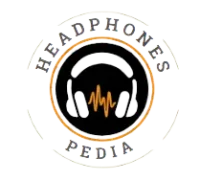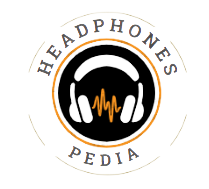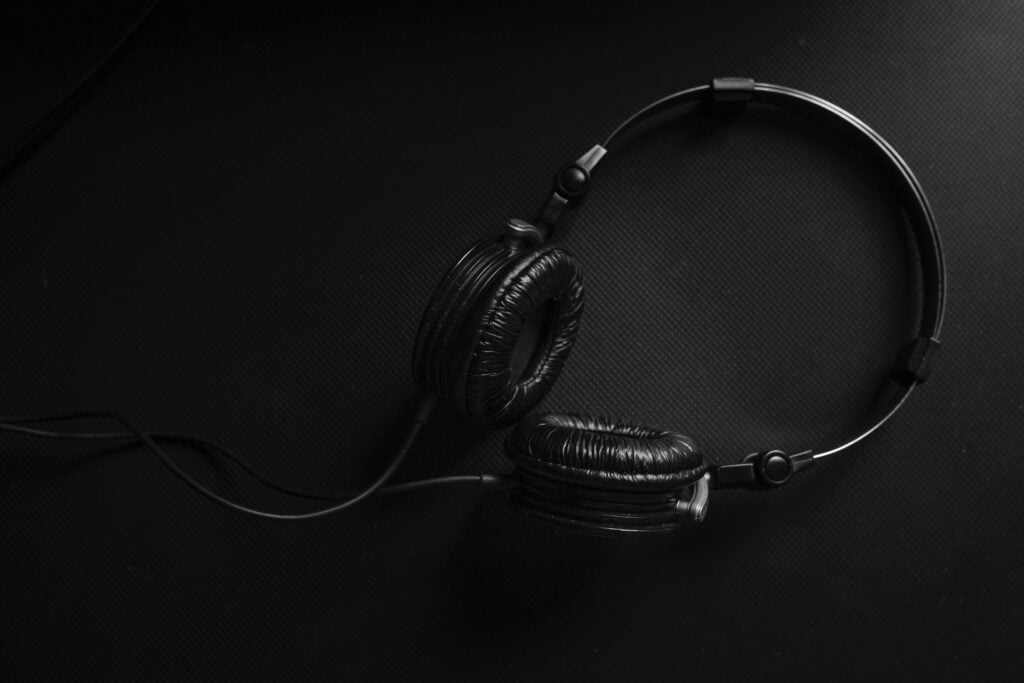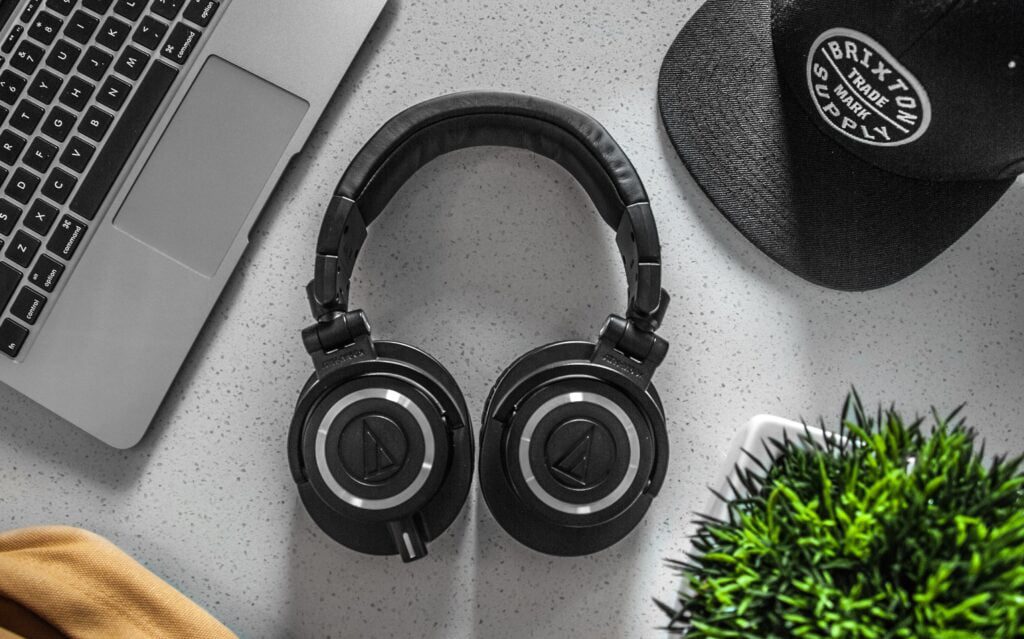Well, the first thing I want to share on this topic is How headphones changed the world, we used to sit together and families joked about something and enjoyed listening to music together but these headphones changed those ways. on the other hand, it helped us stop listening to boring music played by family uncle :D. This was just a change of taste but seriously headphones are the trend changers they even change the way we spend our lives. In this article, I’m going to talk about their history, types, impact, and the future they hold.
A History of Headphones (with Facts and Figures)
In the 1920s, Austrian engineer Nathaniel Baldwin created the first headphones for entertainment. Targeting radio listeners seeking a private audio experience, Baldwin’s design was a significant step toward the personal listening revolution.
These early models were cumbersome and expensive, with limited appeal to the average consumer. However, the groundwork was laid. In the 1930s, German company Beyerdynamic introduced the DT-48, the first pair of dynamic headphones – a technology still used in most headphones today. This innovation paved the way for lighter, more comfortable designs, bringing headphones closer to everyday use.
The real turning point arrived in the 1950s with John C. Koss’s invention of stereo headphones. This breakthrough allowed listeners to experience recorded music’s full depth and dimension, something previously impossible with single-speaker designs. Koss’s creation, the Koss SP-3, is considered a landmark invention. It sparked the rise of portable audio and personal listening, paving the way for the cultural phenomenon headphones would become.
The impact became undeniable with the 1979 release of Sony’s Walkman. This portable cassette player, combined with lightweight, stylish headphones, created a new paradigm for music consumption. People could now take their music anywhere, fostering a generation obsessed with personalized soundscapes. By 1989, over 100 million Walkmans had been sold worldwide, a testament to the transformative power of headphones.
How Headphones changed the world
Headphones’ influence extends far beyond the realm of music. Here’s a deeper dive into how they’ve transformed various aspects of our lives, supported by statistics:
- Communication: From facilitating early telephone conversations to enabling crystal-clear audio calls on smartphones. The wireless headphones market is expected to grow at a CAGR of 8.94% throughout the forecast period, thereby reaching a market size of US$14.382 billion by 2029 from an initial value of US$7.897 billion in 2022.
- Productivity: Research conducted in 2017 points to the possibility that music can enhance cognitive function. But things like the music’s tempo could have an impact on this. This makes headphones a staple in many offices, creating a personal audio bubble that blocks out distractions and allows workers to concentrate.
- Gaming: According to verified market research, gaming Headset Market size was valued at USD 2200 Million in 2023 and is projected to reach USD 4148 Million in 2030, growing at a CAGR of 7.31% during the forecasted period 2024 to 2030. High-fidelity headphones are an essential part of the modern gaming experience. Immersive surround sound creates a sense of realism, drawing players deeper into the virtual world and enhancing their performance.
- Education: Noise-canceling headphones can be a valuable tool in learning environments, particularly for students with attention difficulties. The research published by Pawel in 2021, emphasizes the academic benefits of wearing NC headphones (decreased auditory distraction, increased concentration, learning improvement, and decreased distress). These benefits are particularly expected for students with special needs.
Types of Headphones and Difference
Headphones come in a variety of shapes and sizes, each catering to different preferences and needs. Let’s delve into the three most common headphone designs: over-ear, on-ear, and in-ear models, analyzing their pros, cons, and the technological advancements shaping their evolution.
Over-Ear Headphones:
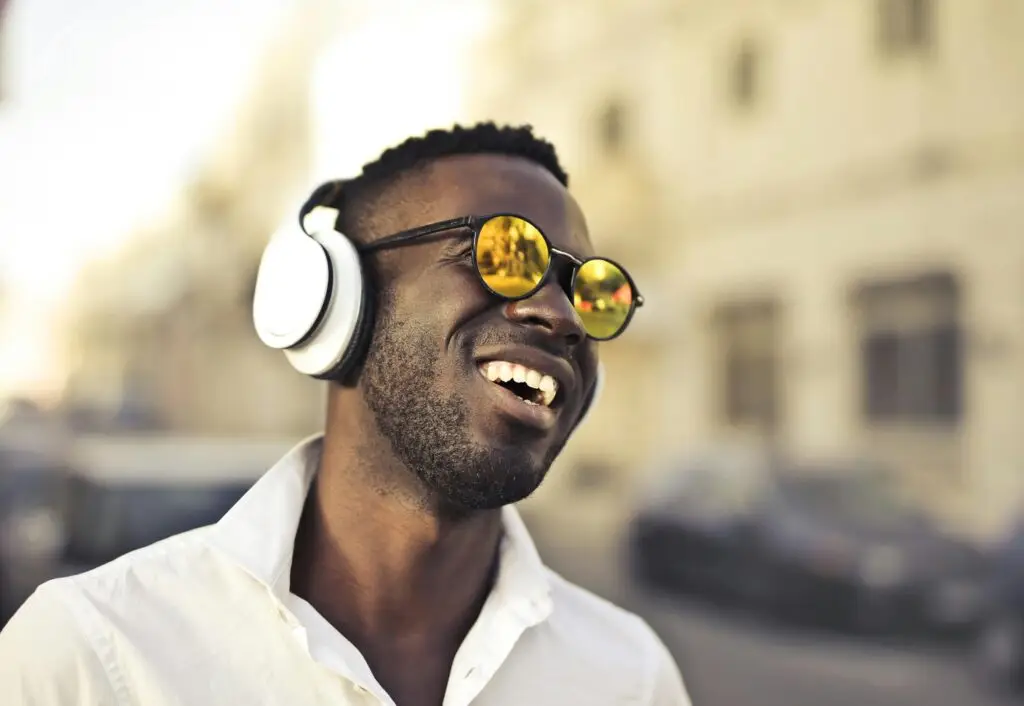
Over-ear headphones, also known as circumaural headphones, completely encircle the ears. They are renowned for:
- Superior Sound Quality: Large drivers and well-sealed earcups create a spacious soundstage with rich bass, clear mids, and crisp highs.
- Exceptional Comfort: Plush ear cushions and padded headbands provide a comfortable listening experience even for extended durations.
- Passive Noise Isolation: The design naturally blocks out a significant amount of ambient noise, creating a more immersive listening environment.
However, over-ear headphones also have some drawbacks:
- Bulkier Design: They are the least portable option, making them less ideal for active lifestyles or travel.
- Warmth and Sweat: The closed-back design can trap heat and cause discomfort in warm environments.
- Price: High-fidelity over-ear headphones can be more expensive compared to other types.
Technological Advancements in Over-Ear Headphones:
- Open-Back Designs: Open-back headphones offer a more natural and breathable listening experience, sacrificing some noise isolation for a wider soundstage.
- Active Noise Cancellation (ANC): Advanced over-ear headphones often integrate ANC technology, electronically canceling out ambient noise for an undisturbed listening experience.
- Wireless Connectivity: Bluetooth connectivity eliminates the need for wires, offering greater freedom of movement.
- Material Innovations: Lighter, more breathable materials are being used to improve comfort and reduce heat buildup.
On-Ear Headphones:

On-ear headphones rest directly on the ears, offering a balance between over-ear and in-ear designs. Here’s a breakdown of their pros and cons:
- Portability: They are more compact and lightweight than over-ear headphones, making them a good choice for travel or on-the-go listening.
- Decent Sound Quality: While not as immersive as over-ear models, on-ear headphones can still deliver good sound quality with well-implemented drivers.
- Leakage: Sound leakage is more common with on-ear headphones, potentially disturbing those around you.
On-ear headphones may not be ideal for everyone due to:
- Comfort: They can cause discomfort for extended use due to pressure on the ears.
- Passive Noise Isolation: The design generally offers less passive noise isolation compared to over-ear models.
Technological Advancements in On-Ear Headphones:
- Memory Foam Earcups: Memory foam conforms to the shape of the ears, improving comfort and passive noise isolation.
- Foldable Designs: Many on-ear headphones fold flat for easy storage and portability.
- Wireless Connectivity: Like over-ear models, Bluetooth connectivity is becoming increasingly common, eliminating the need for wires.
- Lightweight Materials: Manufacturers are using lighter materials like aluminum or plastic to enhance comfort and portability.
In-Ear Headphones:
In-ear headphones, also known as earbuds, are inserted directly into the ear canal. Their popularity stems from:
- Portability and Convenience: They are the most compact and lightweight option, perfect for active lifestyles, workouts, and travel.
- Affordability: In-ear headphones are generally the most affordable option, offering a wide range of price points and features.
- Improved Sound Isolation: Modern in-ear headphones often utilize silicone or foam ear tips that create a good seal in the ear canal, offering passive noise isolation.
However, in-ear headphones come with some limitations:
- Sound Quality: Smaller drivers can struggle to reproduce lower frequencies, potentially resulting in a less rich bass response.
- Fit: Finding the right fit is crucial for sound quality and comfort. Improperly fitting earbuds can cause discomfort or fall out easily.
- Safety: Listening to music at high volumes with in-ear headphones can completely block out ambient noise, posing a safety risk in traffic or public spaces.
Technological Advancements in In-Ear Headphones:
- Active Noise Cancellation (ANC): Previously limited to over-ear models, ANC technology is now being integrated into some high-end in-ear headphones for superior noise isolation.
- True Wireless Technology: True wireless earbuds eliminate wires, offering complete freedom of movement and a sleek, minimalist design.
- Advanced Ear Tips: Companies are developing memory foam, silicone, and flange-style ear tips that provide a more secure and comfortable fit, improving sound isolation and user experience.
- Ambient Sound Modes: Some in-ear headphones offer ambient sound modes that allow users to hear external noise while still listening to music, enhancing safety awareness in public spaces.
- Personalized Audio: Certain in-ear models incorporate features that analyze a user’s ear canal shape and adjust the sound profile for a more personalized listening experience.
- Health Tracking Integration: Advanced in-ear headphones might integrate with fitness trackers or health apps, monitoring heart rate, workout data, and even body temperature.
The Future of Headphone Designs
The future of headphone design promises exciting innovation. We can expect advancements in:
- Smart Materials: Materials that adapt to temperature or noise levels could improve comfort and functionality.
- Biometric Integration: Headphones might integrate with biometric sensors for real-time health monitoring and personalized audio adjustments.
- Augmented Reality (AR) Integration: Imagine in-ear headphones that overlay audio information onto your surroundings, creating immersive AR experiences.
The choice between over-ear, on-ear, and in-ear headphones ultimately comes down to personal preferences and priorities. By understanding the pros, cons, and technological advancements of each design, you can make an informed decision that best suits your needs and listening style.
The Social Impact of Headphones:
While headphones offer undeniable benefits, their widespread use presents some challenges:
- Social Isolation: Constant immersion in personal soundscapes can lead to social isolation. The ability to block out the world entirely might hinder face-to-face communication and interaction with others. Studies have shown a correlation between excessive headphone use and feelings of loneliness.
- Safety Concerns: Listening to music at high volumes while walking or cycling can be a safety hazard, reducing awareness of surroundings. According to the research conducted by Doctor Richard states that from 2004 to 2011in the US There were 116 reports of death or injury of pedestrians wearing headphones. The majority of victims were male (68%) and under the age of 30 (67%). Most vehicles involved in the crashes were trains (55%), and 89% of cases occurred in urban counties. 74% of case reports stated that the victim wore headphones during the crash. Many cases (29%) mentioned that a warning was sounded before the crash.
- Hearing Health: Exposure to loud music for extended periods can damage hearing. It’s important to practice safe listening habits, such as limiting listening time and keeping the volume below 85 decibels.
The Future of Headphones:
Looking ahead, headphones are poised to play an even greater role in our lives. Here are some potential future applications that showcase the innovative potential of headphones:
- Health Monitoring: Headphones equipped with biosensors could track health metrics like heart rate, blood pressure, and even brain activity. This data could be valuable for fitness tracking, personalized workout routines, and even early detection of health issues.
- Immersive Entertainment: The integration of AR and virtual reality (VR) with headphones could create groundbreaking entertainment experiences. Imagine attending a concert virtually, feeling the energy of the crowd, and experiencing the music in a truly immersive way. The lines between reality and the virtual world could become increasingly blurred.
- Brain-Computer Interfaces (BCI): While still in its early stages, BCI technology has the potential to revolutionize the way we interact with headphones. Imagine controlling playback, volume, or even selecting music with just your thoughts. This could open up new possibilities for hands-free audio control.
Conclusion:
From bulky contraptions to sleek, sophisticated devices, headphones have come a long way. Their impact transcends music, shaping how we communicate, work out, and even perceive the world around us. As technology continues to evolve, headphones are poised to become even more integrated into our lives, offering a symphony of possibilities for the future. By understanding their history, impact, and potential, we can
By understanding their history, impact, and potential, we can leverage headphones as powerful tools for enhancing our lives. Here are some key takeaways:
- Headphones are more than just music players. They are communication facilitators, productivity boosters, and gateways to immersive experiences.
- Technology is constantly evolving. Wireless connectivity, noise cancellation, and smart features offer unparalleled convenience and personalization.
- The future holds exciting possibilities. From health monitoring to AR integration, headphones have the potential to revolutionize how we interact with the world around us.
Responsible Use is Key
However, it’s important to acknowledge the potential downsides of headphone use. Social isolation, safety concerns, and hearing health risks require responsible practices. Here are some tips:
- Maintain a balance. Take breaks from headphones and engage in face-to-face interactions.
- Be aware of your surroundings. Keep headphone volume low in public spaces and avoid using them while crossing streets or cycling.
- Practice safe listening. Limit listening time and keep the volume below 85 decibels.
By using headphones responsibly and thoughtfully, we can maximize their benefits while minimizing potential drawbacks.
Looking Forward
Headphones have woven themselves into the fabric of our daily lives. As technology continues to advance, its impact will undoubtedly grow even stronger. The future holds a symphony of possibilities, and headphones will be at the forefront, orchestrating a new era of personalized audio experiences.

I am Michael a Texas-based recording engineer and sound enthusiast. I contribute to Headphones Pedia’s efforts to educate readers about intriguing new devices and other audio-related issues by drawing on their experience working on several sound projects. I also use AI tools to assist with content creation.
